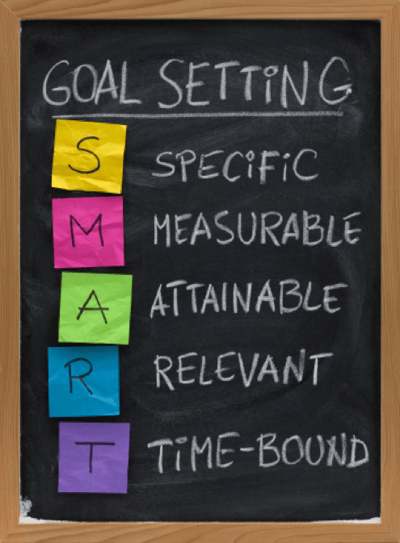Tracking the return on investment (ROI) of content marketing can be tricky for even the most savvy marketers. In fact, they're increasingly under pressure to prove marketing profitability. Oftentimes, the question they need to answer is not why, but how. 
These days, measuring a website's performance such as unique visitors, click-through rate, and page hits just doesn't cut it anymore. Sure, they count as inbound marketing analytics you can benchmark yourself off of (psst, we list 25 metrics that matter here), but to truly measure if you're getting a good bang for your buck, let's get you on the path to creating kickass ROI reports.
1. Review Objectives And Metrics
Some things just bear repeating. Not like an annoying song stuck in your head, but rather a goal that you want to achieve at the end of the day. Start by defining the meaning of what marketing ROI means for your organization. What are your agreed upon key performance indicators (KPIs)?
[DOWNLOAD]

Let's make this easier; use the SMART criteria as a guide to evaluate performance, progress or impact. With this, you can define whether your objective is specific; if you can comfortably measure the progress of your goal; if the goal is realistically attainable; that the goal is relevant to your company; and it fits a time-frame for achieving that goal.

Photo credit: HubSpot
2. Collect The Right Data
According to Infogroup, 53% of marketers wish for more customer data; 10% feel they are drowning in data, and more than one third say they collect just the right amount. OK, so you ran a campaign and now you have your hands on the metrics to match your objectives. While constructing your ROI reports, consider all accurate, relevant data that will ultimately bring value to them. In this way, you will see the impact on your various efforts in driving revenue.
Tip: keep your reports for future reference! With its results fresh in mind, you can devise a follow-up plan on another campaign and this time, conduct an A/B test to optimize performance.
3. Need A Good Tool?
Google Analytics is a great (and free) resource for tracking and understanding how you're working to tie your marketing efforts to the bottom line. With a little guidance to get you set up here, Google Analytics measures conversions, engagement, web traffic, and provides insight on the overall quantity and quality of your social media traffic.
4. Factor In Advertisement Costs
Well Done Marketing ad agency recommends tabulating how much you spent on each ad placement, your average cost/lead and cost/acquisition. Here's the formula:
Ad Spend / # Leads = Cost per Lead
(Sales Team’s Cost + Ad Spend) / # Acquisitions = Cost per Acquisition
Tip: save yourself from future headaches and keep a spreadsheet to track your ongoing expenses.

5. Monitor Your Goals
Procrastinators beware! Don't wait until the end of the month to check on performance. Keep a daily or weekly watch on your KPIs. That way, if you find your performance is below target at any time, you can immediately serve up a plan to make adjustments accordingly. Chances are you'll need to tune up your goals as you delve further into the data over time.
6. Decisions, Decisions
With a kickass ROI report, you can now use the data to measure the effectiveness of your marketing and make decisions. Moving forward, this will enable you to decide whether or not a campaign will have winning results.
Do you have more steps to add? Let's hear them! The key to driving growth is with a marketing analytics approach. Do you know which metrics you absolutely need to measure lead nurturing success?
Download your free guide to learn more.
